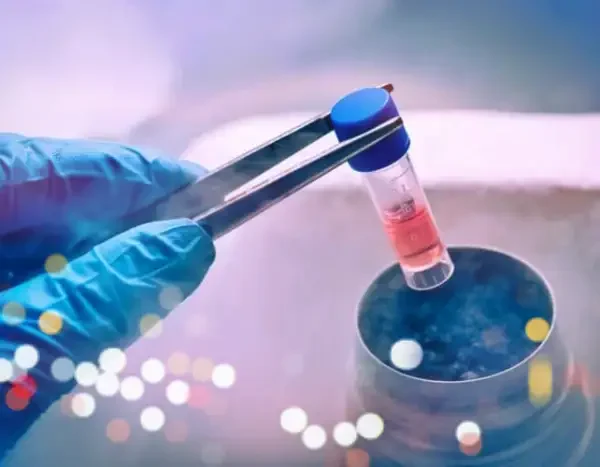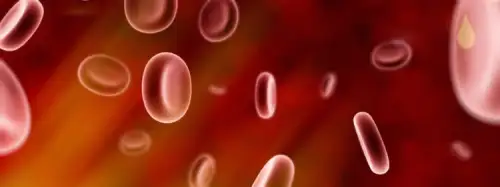The Immortality. Imagine a world where the limitations of the human body disease, decay, and the inevitable decline of age are no longer absolute.
This is the promise of regenerative medicine, a burgeoning field that seeks to grant humanity a version of the biological “superpowers” seen in the natural world.
Lizards can regrow entire limbs. Flatworms, starfish, and sea cucumbers can regenerate whole bodies from fragments. Sharks constantly replace lost teeth, often generating over 20,000 teeth in a lifetime.
The ambition of regenerative medicine is to transfer these remarkable self-repair capabilities to humans, fundamentally changing the trajectory of human health and lifespan.
While Big Data and Artificial Intelligence are revolutionizing how we practice medicine and discover new drugs, regenerative medicine zeroes in on the most direct form of renewal: replacing and rejuvenating our physical selves.
The ultimate goal is nothing less than the wholesale upgrade of the entire human body.
The Immortality, Three Pillars of Regeneration.
The journey toward biological renewal is currently being pursued through three primary, interconnected regenerative technologies, each addressing a critical aspect of age-related decline:
1. Repair & Renewal: Harnessing the body’s natural regenerative engine—Stem Cells.
2. Replacement: Creating and implanting new organs through Organ Regeneration and Bioprinting.
3. Rejuvenation: Tapping into systemic factors, notably through the study of Young Blood and Parabiosis.
Let’s dive into the fascinating science behind this quest for radical longevity.
Repair & Renewal.
The Power of Stem Cells.
Stem cells are the body’s master repair crew. These undifferentiated cells possess the remarkable ability to transform (differentiate) into specialized cells becoming heart tissue, neurons, liver cells, lung tissue, skin, and more.
Crucially, they can also self-renew, producing more stem cells to maintain a reserve. In a child or young adult, this abundant supply of potent stem cells acts as a robust, built-in repair system, constantly called to sites of damage or inflammation to restore normal function.
The Age-Related Decline.
The tragedy of aging is that our stem cell reserves diminish drastically, sometimes by a factor of 100 to 10,000, depending on the specific tissue or organ. Furthermore, the remaining cells accumulate genetic mutations, compromising their quality and effectiveness.
This is akin to a luxurious, newly built mansion with a team of young, highly skilled repairmen. Over time, the repairmen age, their numbers dwindle, and their tools dull, leading to the inevitable deterioration and eventual collapse of the structure.
Revitalizing the Repair Crew.
A central challenge in longevity research is how to restore and rejuvenate this crucial stem cell population.
Autologous Adult Stem Cells.
One approach involves extracting and concentrating a person’s own adult stem cells from sources like adipose (fat) tissue or bone marrow. However, as these cells are older, they are fewer in number and may have accumulated mutations.
Allogeneic Neonatal Stem Cells.
Many scientists and clinicians are increasingly favoring an alternative, more pristine source: stem cells derived from placenta or umbilical cord blood after birth.
Available in vast quantities and possessing the “original blueprint” of a newborn, these cells can be administered intravenously or into joints to revitalize the body.
These stem cells act as biochemical factories, producing vital growth factors that can:
• Reduce systemic inflammation.
• Combat autoimmune diseases.
• Increase muscle mass.
• Repair joints.
• Rejuvenate skin and promote hair growth.
The field is exploding: stem cell-related research publications have multiplied 40-fold over the past decade, and the stem cell market is projected to reach hundreds of billions of dollars.
Breakthroughs in Stem Cell Therapy.
Recent clinical and research successes underscore the technology’s potential:
• Japanese biologists successfully grew and developed complex human eye tissues—retina, cornea, and lens—from just a small sample of adult skin cells.
• A Stanford study showed that seven of eighteen stroke survivors who received stem cell treatment exhibited significant improvement in motor function, offering hope for treatments for neurodegenerative diseases like Alzheimer’s, Parkinson’s, and ALS.
• In the cervical spine of a recently paralyzed 21-year-old, the injection of stem cells by USC Neurorestoration Center physicians led to a marked improvement in both sensation and movement in his arms.
• Stem cell therapy achieved a milestone in 2019 when doctors in the UK effectively cured a patient with HIV for the second time in history.
Replacement.
Organ Regeneration and 3D Bioprinting.
The need for replacement organs is dire. In the US alone, over 113,000 people were on the organ transplant waiting list in a single month (January 2019), with someone being added every 10 minutes. On average, 20 people die daily waiting for a transplant.
The organ shortage is a critical and growing bottleneck to longevity. The advent of safer vehicles, such as self-driving cars, ironically reduces the number of accidental fatalities, a primary source of donor organs, exacerbating the problem.
This massive unmet need presents a profound opportunity for replacement and regenerative medicine.
United Therapeutics and the Quest for Unlimited Organs.
Martine Rothblatt, CEO of United Therapeutics (and founder of Sirius Satellite Radio), pivoted her career into the organ replacement industry after her daughter developed a rare lung disease. Her company is pursuing a multi-pronged strategy to address the lung shortage.
3D Bioprinting… Building Organs Layer by Layer.
United Therapeutics has partnered with 3D Systems to develop a collagen bioprinter. Using a process called stereolithography, a UV laser solidifies a bath of light-sensitive collagen, gradually building a lung scaffold with a resolution currently near 20 micrometers though micrometer-scale resolution is ultimately needed for full functionality.
Once the collagen scaffold is printed, the next step is recellularization: seeding the scaffold with human stem cells that grow, differentiate, and ultimately create a fully functional, biological organ.
Harvard experimental surgeon Harald Ott demonstrated the viability of this approach in 2018 by successfully perfusing a pig lung, stripped of its original cells, with billions of human cells, achieving rudimentary function upon re-connection to the host circulation.
Humanizing Pig Organs.
Rothblatt’s most audacious strategy is xenotransplantation—transplanting animal organs into humans. Given the size and shape similarity to human organs, pigs are the donor of choice.
The key challenge lies in genetic modification to prevent human immune rejection. This involves editing out pig genes that produce xeno-antigens (foreign markers) and introducing human genes to regulate immune and coagulation pathways.
United Therapeutics is investing heavily in this space, partnering with leading medical institutions to launch xenotransplantation programs for hearts, kidneys, and lungs.
Rothblatt aims to see the first human transplant within three to four years. The company is even building a massive laboratory facility to produce up to 1,000 sets of genetically modified pig xeno-lungs annually.
Reviving Marginal Organs.
As a shorter-term solution, Rothblatt is tackling the inefficiency of current organ donation. Nearly 75% of potential donor lungs are never used, as only about 30% meet initial criteria, and an additional 15% are deemed unusable upon arrival at the surgical center.
To salvage these “marginal-quality” lungs, United Therapeutics invested in TransMedics, a company developing ex vivo perfusion systems.
The XVIVO Perfusion System takes donor lungs that were initially unsuitable, and by perfusing (pumping a fluid containing oxygen and nutrients) and ventilating them under near-normal body temperature conditions, surgeons can re-assess and often restore the graft’s viability, potentially saving a massive number of lives in the process.
Rejuvenation.
Young Blood and Parabiosis.
The concept of parabiosis linking the circulatory systems of two organisms has yielded remarkable, if controversial, findings.
Research from Stanford and Harvard has shown that older animals receiving blood transfusions from younger animals exhibit regeneration across multiple tissues and organs. Conversely, young animals receiving older blood age faster.
The Controversial Startup, Ambrosia.
A San Francisco startup named Ambrosia began clinical trials of parabiosis therapy. Their protocol involved healthy participants aged 35 and older receiving plasma transfusions from donors under 25, followed by monitoring for two years to track molecular markers of health and aging.
Founder Jesse Karmazin reported observations of “almost permanent” reversal of aging symptoms across major organ systems, akin to “restoring gene expression.” However, due to a notable lack of clinical data supporting the treatment’s efficacy, the FDA issued a safety warning in 2019, leading Ambrosia to halt operations.
The Scientifically Rigorous Approach, Elevian.
On the other side of the spectrum is Elevian, a Harvard University spinout pursuing longevity with a cautious, evidence-based strategy. Elevian’s scientific founders isolated specific circulating factors responsible for the “young blood” effect.
A prime example is the naturally occurring molecule Growth Differentiation Factor 11 (GDF11). When administered to aged mice, GDF11 was shown to replicate many of the regenerative effects of young blood, rejuvenating the heart, brain, muscles, lungs, and kidneys. Specifically, GDF11 supplementation has been linked to:
• Reduction of age-related cardiac hypertrophy (heart thickening).
• Accelerated skeletal muscle repair and improved exercise capacity.
• Enhanced brain function and cerebral blood flow.
• Improved metabolism.
Elevian is developing therapeutics to modulate GDF11 and other circulating factors. The ultimate goal is to restore the body’s intrinsic regenerative capacity, addressing the root causes of age-related diseases and potentially preventing or reversing many illnesses associated with aging to extend the healthspan the period of life spent in good health.
The Future of Human Longevity.
In 1992, futurologist Leland Kaiser coined the term “regenerative medicine,” foreseeing a new branch of medicine that would “attempt to change the course of chronic disease and, in many cases, restore tired and weakened organ systems.”
Since then, the regenerative medicine industry has grown exponentially, and this rapid growth is predicted to continue. The convergence of stem cell technology, 3D bioprinting, xenotransplantation, and molecular-level rejuvenation is rapidly bringing the radical extension of the human lifespan from the realm of science fiction into tangible reality.
We are on the brink of acquiring the regenerative superpowers that, until now, belonged only to a handful of animals and the superheroes of comic books.
The next few decades will be defined by humanity’s success in fundamentally overcoming the biological limits of age and decay, ushering in an era of unprecedented longevity and vitality.
Have a Great Day!





